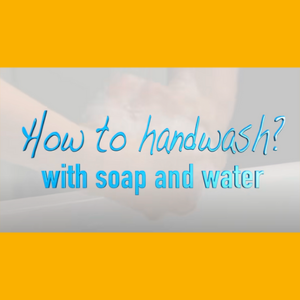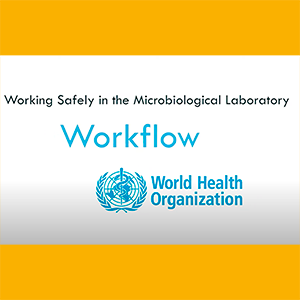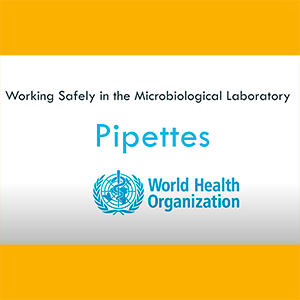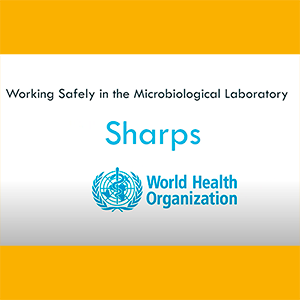Best practices
The most important element of biosafety is strict adherence to standard microbiological practice and techniques. All who work with infectious agents or potentially-infected materials must know their risks and must be an expert in the practices and techniques required for handling these materials safely.

- Lab wars (video)
Best practices
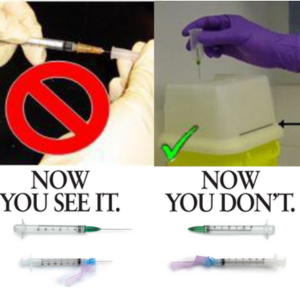
- Avoid its use whenever possible.
- Avoid sheathing the needles, forcing them or separating them from the syringe.
- Needles should be disposed of in puncture-resistant containers. Never fill the container more than ¾.
- Use syringes with a bayonet fit to prevent the needle from separating from the syringe or use disposable syringes with built-in needles.
- Carefully fill the syringe to avoid the formation of bubbles and foam in the material to be injected.
- Avoid, if possible, the use of syringes to mix infectious liquids; if using them, make sure that only the tip of the needle penetrates the liquid in the container.
- Wrap the needle and the cap of the container with cotton soaked in an appropriate disinfectant before removing the needle from the rubber cap of the vial.
- Expel excess liquid and bubbles from the syringe by holding it vertically on a cotton pad with an appropriate disinfectant.
- Infectious material should preferably be handled in a CSB.
- Appropriately restrain the animals that must be injected parenterally. Oral or intranasal inoculations must be done with blunt needles or cannulas.
- Dispose of this material in puncture-resistant waste containers.
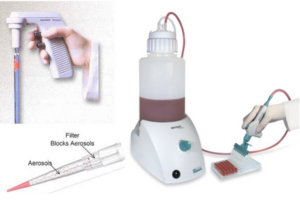
- Pipetting with the mouth is strictly prohibited. Mechanical systems must always be used.
- Pipettes must have filters to reduce the possibility of contamination of the system.
- A liquid containing infectious agents should never be mixed by alternate suction and expulsion.
- The expulsion of the liquid contained in the tip of the pipette must always be done gently and letting it slide down the inner wall of the container.
- Contaminated pipettes must be disinfected by immersion in disinfecting solution for the indicated time before reuse.
- Waste containers for used tips and Pasteur pipettes must always be placed inside the CSB and never outside.
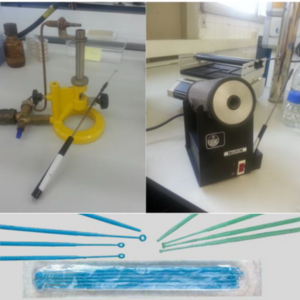
- To inoculate a culture you need to use a cold inoculating loop. The end of the inoculation loop must have a maximum diameter of 2-3 mm and be completely closed. The filament must have a maximum length of 6 cm to minimize vibrations.
- The risk of aerosol formation, when sterilizing an inoculating loop by flaming, can be avoided by using benchtop micro incinerators or sterile plastic disposable inoculating loops.
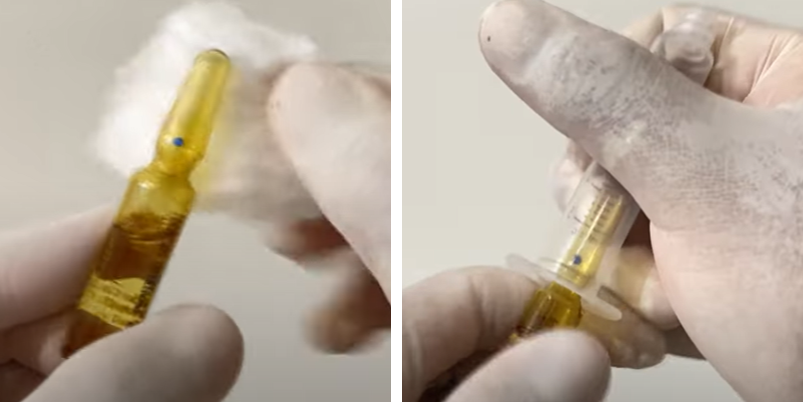
- Decontaminate the outer surface of the vial, if applicable.
- Hold the vial with cotton soaked in 70% alcohol, to protect your hands, apply pressure on the more fragile side of the neck to break the glass. A syringe can also be used instead of cotton (see image).
- Allow air to enter and then slowly remove the broken part and the cotton.
- Slowly add the solution to dissolve the sample and avoid the formation of foam.
Why is hand washing with soap and water better than using an alcohol-based disinfectant?
CDC (Centers for Disease Control and Prevention) recommends washing hands with soap and water whenever possible because handwashing reduces the amounts of all types of germs and chemicals on hands. But if soap and water are not available, using a hand sanitizer with at least 60% alcohol can help you avoid getting sick and spreading germs to others. That said, it can be added that:
- Soap and water are more effective than hand sanitizers at removing certain kinds of germs, like Cryptosporidium, norovirus, and Clostridium difficile. Although alcohol-based hand sanitizers can inactivate many types of microbes very effectively when used correctly (ex. coronavirus), people may not use a large enough volume of the sanitizers or may wipe it off before it has dried.
- Many studies show that hand sanitizers work well in clinical settings like hospitals, where hands come into contact with germs but generally are not heavily soiled or greasy. Hands may become very greasy or soiled in community settings, such as after people handle food, play sports, work in the garden, or go camping or fishing. When hands are heavily soiled or greasy, hand sanitizers may not work well.
- Hand sanitizers without 60-95% alcohol: 1) may not work equally well for many types of germs; and 2) merely reduce the growth of germs rather than kill them outright.
- The presence of alcohol in the disinfectant solution and applied with high frequency can lead to certain problems for certain people with particularly sensitive skin.
Hand hygiene is the most efficient and cheapest way to limit the spread of disease.
